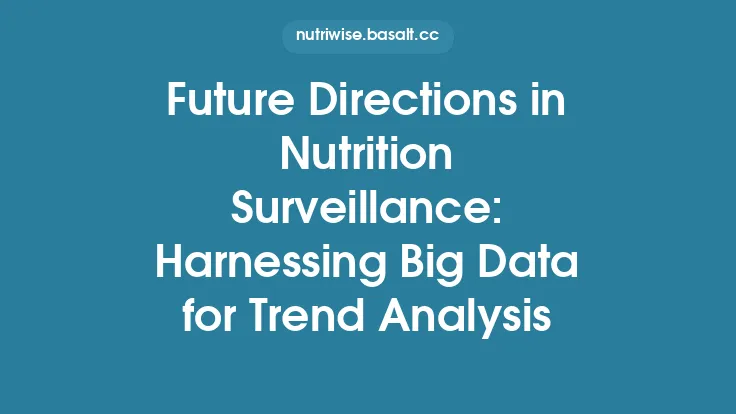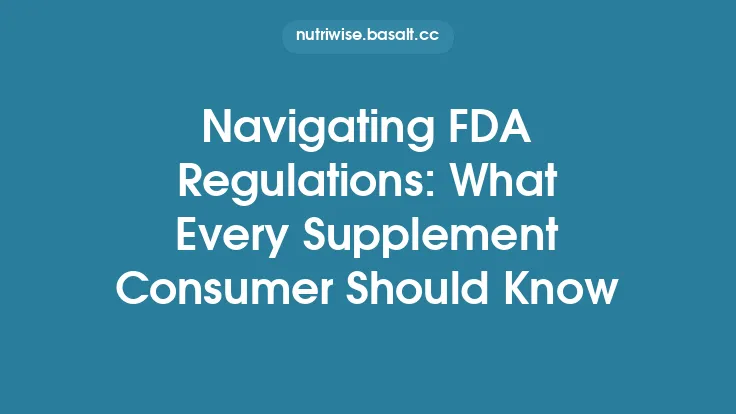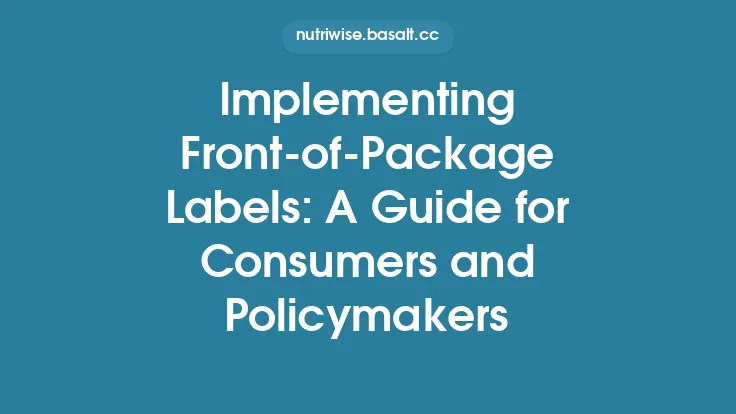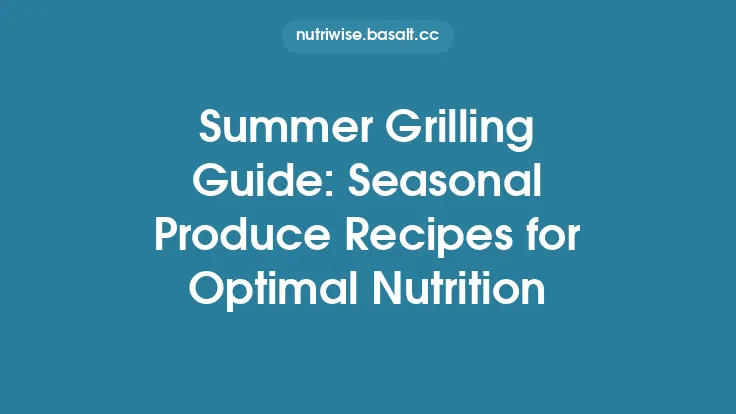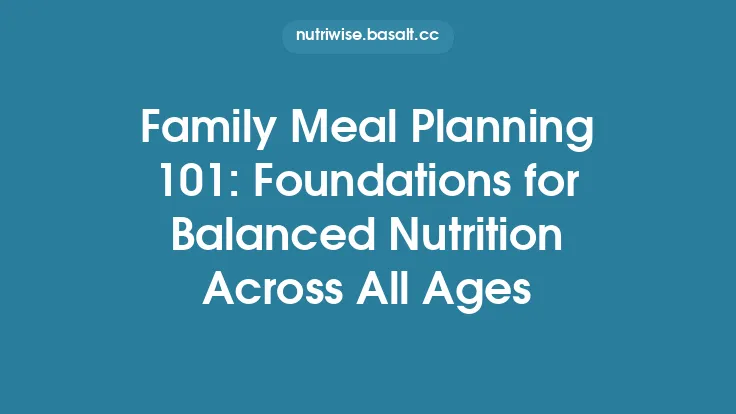In today’s digital age, anyone with a smartphone can access a flood of nutrition information at any time of day. While this abundance can be empowering, it also makes it easy to encounter misleading claims, outdated data, or outright falsehoods. Developing strong media‑literacy skills is essential for separating reliable guidance from hype. Below are practical, evergreen strategies you can use to evaluate nutrition content online, protect yourself from misinformation, and make evidence‑based dietary decisions.
1. Identify the Source and Its Credentials
a. Author expertise – Look for the author’s qualifications. Are they a registered dietitian (RD), a certified nutrition specialist (CNS), a medical doctor, or a researcher with peer‑reviewed publications? Credentials such as “PhD in Nutrition,” “MD,” or “RD” signal formal training, whereas titles like “nutrition coach” or “wellness blogger” may indicate a less rigorous background.
b. Institutional affiliation – Content produced by universities, government health agencies (e.g., CDC, WHO), or reputable research institutions typically undergoes editorial review. Corporate or commercial sites may have a vested interest in promoting certain products, so scrutinize any potential conflicts of interest.
c. Publication venue – Peer‑reviewed journals, official health organization websites, and established medical portals (e.g., Mayo Clinic, NHS) are generally trustworthy. Blogs, forums, and social‑media posts can be valuable for community support but should be cross‑checked against more authoritative sources.
2. Examine the Evidence Base
a. Primary vs. secondary sources – Primary research (original studies, randomized controlled trials, systematic reviews) provides the raw data. Secondary sources (news articles, summaries) interpret that data. Whenever possible, trace the claim back to the original study.
b. Study design quality – Not all research is created equal. Randomized controlled trials (RCTs) and meta‑analyses rank highest for establishing causality. Observational studies (cohort, case‑control) can suggest associations but are more vulnerable to confounding variables.
c. Sample size and population – Small sample sizes or studies limited to specific demographics (e.g., “college athletes”) may not be generalizable. Look for research that includes diverse participants and adequate power to detect meaningful effects.
d. Statistical significance vs. clinical relevance – A p‑value below 0.05 indicates statistical significance, but the effect size matters more for real‑world impact. A nutrient that reduces disease risk by 0.5 % may be statistically significant yet clinically negligible.
3. Check for Transparency and Disclosure
a. Funding sources – Research funded by food manufacturers, supplement companies, or industry groups may carry bias. Reputable journals require authors to disclose financial ties; look for these statements.
b. Conflict‑of‑interest statements – Authors should explicitly state any relationships that could influence the work. Absence of a disclosure does not guarantee lack of bias, but it is a red flag when missing.
c. Methodology clarity – Reliable articles detail how data were collected, analyzed, and interpreted. Vague descriptions (“studies show…”) without methodological specifics often indicate oversimplification.
4. Evaluate the Language Used
a. Sensationalism – Headlines that promise “miracle” results, “cure‑all” foods, or “instant weight loss” are typically designed to attract clicks rather than convey balanced information. Look for measured language that acknowledges limitations.
b. Absolutes and qualifiers – Phrases like “always,” “never,” or “the best” are rarely accurate in nutrition science. Credible sources use qualifiers such as “may,” “potentially,” or “in some cases.”
c. Anecdotal evidence – Personal testimonies can be compelling but are not scientific proof. Distinguish between anecdotal stories and data‑driven conclusions.
5. Cross‑Reference Multiple Sources
a. Consensus building – When several independent, reputable sources converge on the same conclusion, confidence in the information increases. For example, if the USDA, WHO, and multiple peer‑reviewed reviews all recommend a specific intake of dietary fiber, the recommendation is likely robust.
b. Date of publication – Nutrition science evolves. Verify that the information reflects the most recent guidelines or research. Older articles may still be valuable but should be contextualized with newer findings.
c. Fact‑checking tools – Websites such as Snopes, FactCheck.org, or specialized health fact‑checkers can help verify claims. Use them to confirm or refute striking statements.
6. Understand Common Cognitive Biases
a. Confirmation bias – We tend to favor information that aligns with pre‑existing beliefs. Actively seek out data that challenges your assumptions to avoid echo chambers.
b. Availability heuristic – Recent or vivid stories (e.g., a viral diet trend) may seem more credible than statistical evidence. Remember that anecdotal popularity does not equate to scientific validity.
c. Authority bias – Even experts can err or hold outdated views. Evaluate the content on its merits, not solely on the prestige of the author.
7. Use Structured Evaluation Frameworks
A practical way to assess any nutrition claim is to apply a checklist such as the “CRAAP” test (Currency, Relevance, Authority, Accuracy, Purpose). Here’s how it translates to nutrition information:
| Criterion | Questions to Ask |
|---|---|
| Currency | When was the information published or last updated? Does it reflect current dietary guidelines? |
| Relevance | Is the content directly related to the nutritional question you have? Does it address the specific population you belong to? |
| Authority | Who authored the piece? What are their credentials? What institution backs the content? |
| Accuracy | Are claims supported by cited research? Are references peer‑reviewed? Are there any factual errors? |
| Purpose | Is the goal to inform, sell a product, or persuade? Is there an evident bias or agenda? |
Applying this checklist systematically can turn a casual scroll into a critical appraisal.
8. Leverage Technology Wisely
a. Browser extensions – Tools like “NewsGuard” or “Media Bias/Fact Check” can flag questionable sites and provide credibility scores.
b. Academic databases – Platforms such as PubMed, Google Scholar, and the Cochrane Library give direct access to primary research. Learning basic search strategies (e.g., using Boolean operators) can dramatically improve the quality of sources you retrieve.
c. Nutrition‑specific apps – Some reputable apps (e.g., USDA’s MyPlate, the WHO’s nutrition tracker) are built on government or academic data and can serve as reliable reference points.
9. Practice Skeptical Reading, Not Cynicism
Healthy skepticism means questioning and verifying, not dismissing all information outright. Recognize that nutrition science is complex and sometimes contradictory due to evolving methodologies, population differences, and emerging evidence. A balanced approach involves:
- Acknowledging uncertainty – Accept that some topics (e.g., optimal macronutrient ratios for specific individuals) may lack definitive answers.
- Prioritizing reproducibility – Give weight to findings that have been replicated across multiple studies and settings.
- Focusing on fundamentals – Core principles—adequate fruit and vegetable intake, whole grains, lean proteins, and limited added sugars—are consistently supported and form a solid foundation regardless of emerging trends.
10. Take Action: From Knowledge to Practice
After vetting the information, translate it into actionable steps:
- Create a personal evidence log – Document the source, key findings, and how they align with your health goals.
- Consult qualified professionals – Use your curated information as a conversation starter with a registered dietitian or physician, especially when considering major dietary changes.
- Set measurable goals – Base targets (e.g., “increase fiber intake to 25 g/day”) on evidence‑based recommendations rather than anecdotal claims.
- Monitor outcomes – Track how changes affect your health markers (energy levels, blood work, weight) and adjust based on both personal experience and ongoing research.
Closing Thoughts
Navigating nutrition information online no longer requires a degree in epidemiology, but it does demand a disciplined, methodical mindset. By scrutinizing sources, evaluating evidence, recognizing bias, and employing structured assessment tools, you can cut through the noise and build a reliable knowledge base. This media‑literacy toolkit empowers you to make informed dietary choices that stand the test of time—regardless of fleeting trends or sensational headlines.

